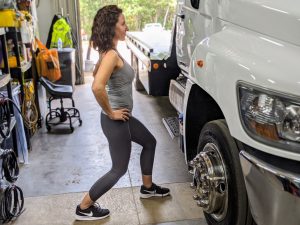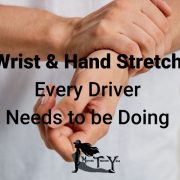Plantar Fasciitis and It’s Relief Options
Plantar Fasciitis
Plantar Fasciitis is a cause of heel pain, often found in adults over the age of 40. However, if you sit for long periods or are on your feet all day or engage in activities like running, you may find yourself in a painful situation.
It is a common cause of heel pain that can turn into a chronic condition if ignored. But this tightness can also be tied to and create calf tightness, knee pain, even hamstring tightness because everything is connected.
Plantar Fasciitis can come and go but can also shift from foot pain and tightness to Achilles tendon or caf tightness and leave you thinking these are different conditions when, in fact, they are all connected- literally connected. Those issues are all connected, like one big catsuit.
Plantar Fasciitis can affect your way of walking and cause injury to certain parts of your body like knees, legs, hips, or back. Most people try to treat plantar fasciitis with shoe inserts, but that is not a treatment that is only masking the pain.
The plantar fascia is a thick, netlike ligament that connects your heel bone to the front of the foot. It supports the arch of your foot and absorbs the shock when you walk. Too much pressure on this ligament can cause the fascia to tear. These tiny tears inflame the ligament. As a result, you experience heel pain while walking or standing.

Plantar Fasciitis Causes
- Running
- Being on one’s feet for long periods
- Wearing ill-fitting shoes
- Poor muscular in your feet
- Wearing high heels
- Imbalances in the feet (excessive pronation or supination)
- Being overweight
- Having tight hips
- Having tight calves
- Wearing shoes for long periods
- Not walking enough
Plantar Fasciitis is a common problem experienced by runners. Those with jobs that revolve around being on their feet often have a higher risk of developing plantar fasciitis. You can develop plantar fasciitis through high-impact activities or sports that involve a lot of walking, running, or jumping. However, on the flip side, if you find yourself sitting more than you should, this can also cause tightness in the arches, calves, and hamstrings, which can also bring about these types of issues.
Overweight or obese individuals are at a greater risk of developing this problem due to the increased pressure on their plantar fascia ligaments. This is especially true if the weight gain is sudden. Pregnant women often suffer from this problem in their late pregnancy due to the increased weight and stress on their arches. And even after giving birth or after losing weight, you can still find yourself suffering from foot pain if not cared for properly.
Plantar Fasciitis Symptoms
Plantar Fasciitis typically causes pain at the bottom of your heel or the bottom mid-foot area. The pain is usually worse when you take your first few steps in the morning or when you’ve been sitting or standing for long periods. People with plantar fascia don’t usually experience the pain during the activity but after it. After working with thousands of people over the last 17 years, I have found that many with plantar fasciitis also have chronically tight Achilles tendons and calves. So if your foot pain comes and goes, ask yourself where it hurt when your feet don’t? Remember, it’s all connected!
Plantar Fasciitis Relief Options
- Resting
- Icing
- Stretching and Strengthening Exercises
- Changing Shoes
- Fascial Foot Rolling
- Night Splints
- Topical Pain Relief Creams like STIFF Mother Trucker
- Anti-Inflammatory Drugs
Stretching and strengthening exercises can help you relieve symptoms. Try stretching exercises for plantar fascia, calves, and Achilles tendons.
Like the Functional Calf Stretch to help stretch the tendon and bring more mobility to the calf, ankle, and foot.
Functional Calf Stretch:
- Stand tall
- Take a casual step back
- Point both feet forward and keep your feet hips distance or wider
- Square your hips forward and bend your front knee over its ankle
- Exhale, bend your back knee as far as you can without lifting the heel
- Inhale, straighten the back leg
- Repeat this process ten times on each side
- Watch the back knee and ankle and keep them from falling inward


That fascial tendon has become much like plastic, and so in the beginning, it may feel more uncomfortable than the latter. So consider icing afterward or stretching every other day until that plastic softens to be more elastic.
Strengthening exercises for your lower legs and foot muscles. It is essential to break from certain high-impact activities involving running or jumping to give proper time for the plantar fascia to heal.
When a part of your body is weak, it is not the same as that same part being tight, and the two often get confused as one. When it comes to the plantar tendon, in my experience, it is often both. We walk around in casts all day (aka shoes), and so the muscles in our feet get lazy, then we walk barefoot and bring pain and think it’s that we are barefoot that is causing the problem, but it’s that we aren’t using the muscles in our feet enough and wearing shoes too often. Now a podiatrist that sells shoe inserts will probably tell you differently. But think about any inserts as temporary; you must stretch your feet and calves and build up strength. You can’t do that when you are sitting all day with shoes on.
8 Ways to Soothe and Remedy Foot Pain
1.Take off your shoes. Yes, I know everyone else says to keep them on, but you haven’t allowed your feet to work in the way they are designed to. Ever met someone from a third-world country who has plantar fasciitis? Nope. Why? Because they walk barefoot, use their feet, and don’t cram their feet into ill-fitting shoes.
2. Drink more water.
When our body is dehydrated, our fascia becomes sticky and restricted. And that 100% will lead to physical pain, tightness, and even cramping. You want to get a minimum of half your body weight in ounces, my friend. But today, start with one more bottle than yesterday.
3. Learn how to stand on your feet properly.
Your feet are aching for you to listen to them. Posture starts at your feet.
4. Stretch Your Feet.
Try sneaking in a little stretching each day. This can be Functional Calf Stretch like I suggested above or one of the steps of your truck or even in your sleeper (see our Mother Trucker Yoga membership site for videos)
5. Try rolling.
Some ideas: Mayo Fascia Release (rolling), invest in a mini massage ball or roller stick and start moving your feet and hips. For more ideas, you can check out this post on 4 Foam Rolling Hotspot for Fascia Release.

No matter what, plantar fasciitis is not a death sentence, and you most definitely do not have to live with it the rest of your life. But it would help if you started making small, simple changes to get the relief you are looking for.













Leave a Reply
Want to join the discussion?Feel free to contribute!